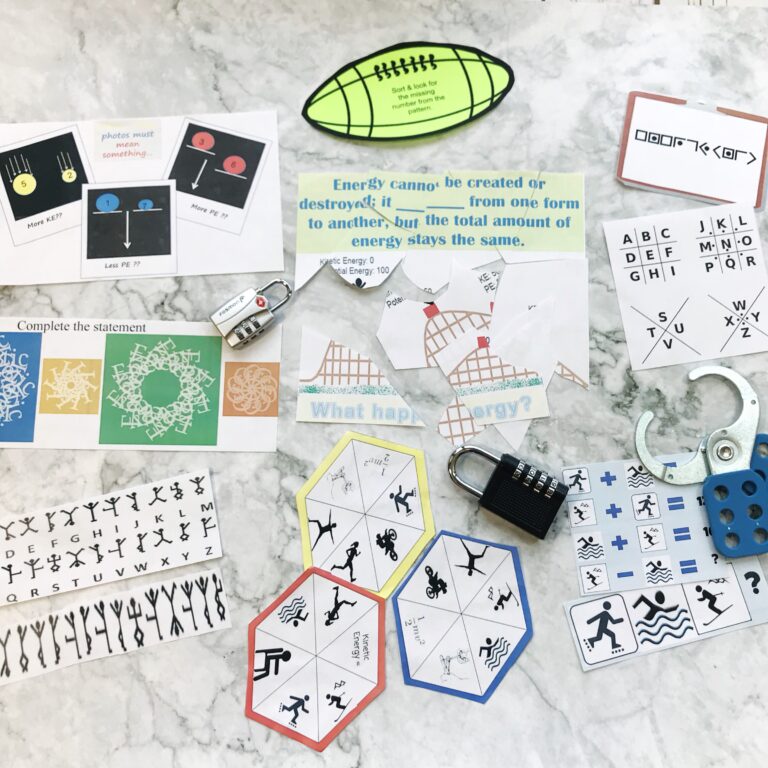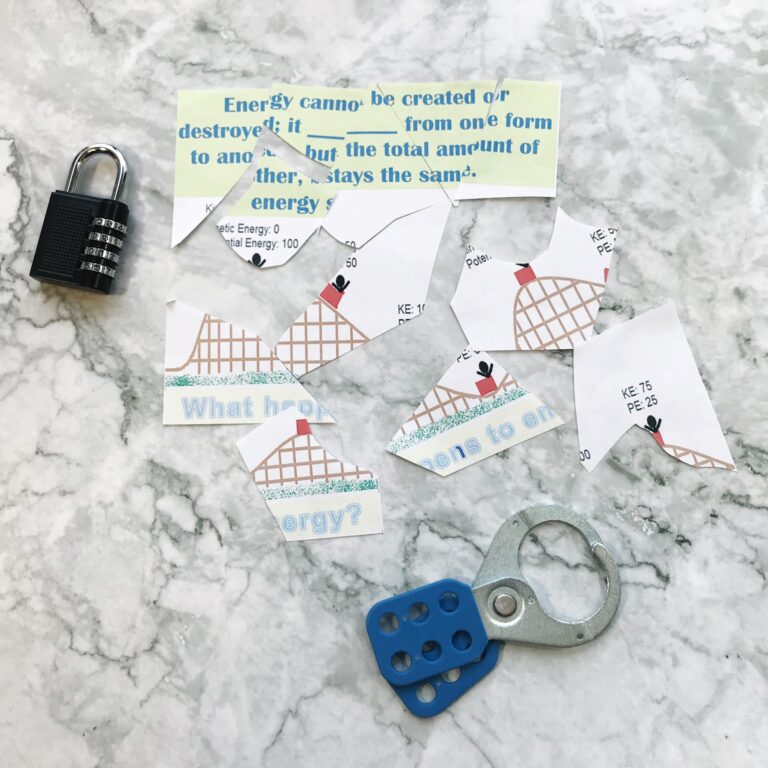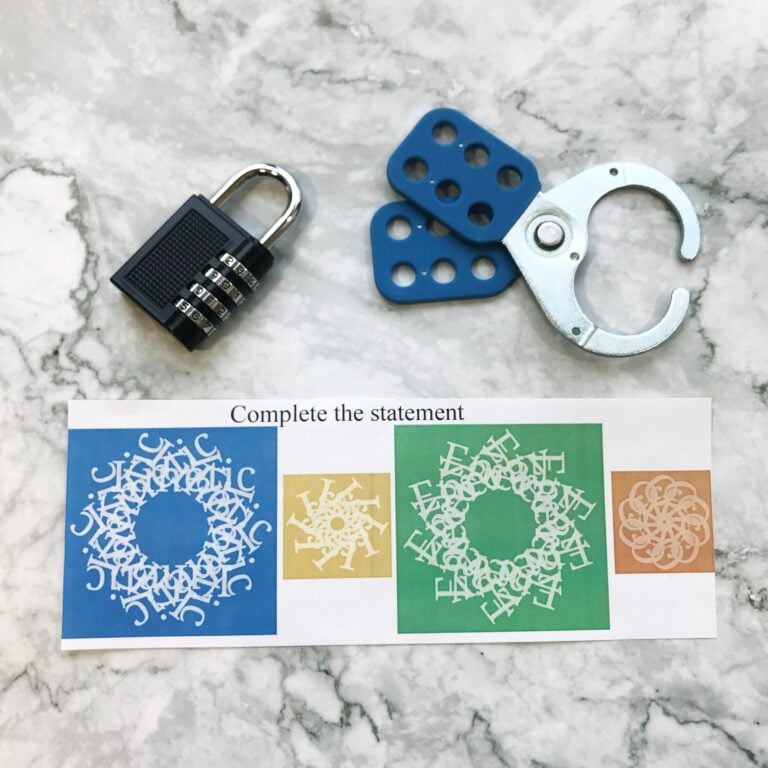The Potential and Kinetic Energy Escape Room is an immersive experience for your students that allows them to demonstrate their knowledge of kinetic energy and potential energy in a fun and engaging way.

A Unique Escape Room Experience:
Unlike many escape rooms, the teacher is in total control of which of the 8 puzzles they want to use and in which order to use them. Each puzzle is independent of the others. This is great for shorter or longer class periods.
Student Background:
Students will need to be able to compare and contrast potential and kinetic energy. They will need to know how to construct, use, and present arguments to support the claim that when the kinetic energy of an object changes, energy is transferred to or from the object.



Looking for more on Potential and Kinetic Energy?
What's Included in the Product?
- Teacher directions
- Detailed answer key for each puzzle
- Single Student Digital Version PPT that can be uploaded into Google Slides
- Single Student Print Version in PPT and PDF for families to print at home
- Editable Teacher Version PPT
- Digital answer sheet (Google form) that is great for 1:1 or Google Classrooms. Replaces paper answer key if you choose.
- Video challenge to set the mood for the challenge
- 8 unique puzzles with all printable props
- A list of over 50 ideas for prizes
- Reward templates
- 30 unique signs to hold up for the picture at the end (plus, editable template)
What Materials Will I Need?
The escape room can be run in the classroom or online (see Distance Learning Ready in the next section).
In-Class Escape Rooms
The cheapest and easiest method is to use manila envelopes for the puzzles (all directions provided).
All necessary printed materials for preparation are included. Laminating the materials will preserve them for repeated use.
Optionally, for a more authentic escape room each group will need the following:
- One Lockout Hasp
- Two, 4-digit locks
- Two, 3-digit lock
- One storage box that includes a place for the lockout hasp
Students may submit their answers on paper or using a Google Form (the link is included).
Distance Learning Ready
Distance Learning methods include digital or print-at-home versions.
Digital Version
You can assign the “Single Student Digital Version” PowerPoint through email or your school's learning management system. This file has no answers and students solve by reading and answering questions or manipulating images on the slide.
For the Potential and Kinetic Escape Room, the student will also need:
- Small mirror or reflective surface (cell phone camera would work also)
This version can also be uploaded to Google Drive and opened with Google Slides.
- Open Google Slides.
- Go to the File menu and choose Open
- Find the tab on the right called Upload
- Click Select a File on Your Device
- Select the “Single Student Digital Version Digital Version”
- Click Open
If you do make Google slides, the copyright only allows for use with your own students. Do not share the link publicly.
Print-at-home Version
You can also assign or email the Single Student Print Version as a PPT or PDF for families to print at home.
For the printed Potential and Kinetic Energy Escape Room, the student will also need:
- Small mirror or reflective surface (cell phone camera would work also)
Essential Questions and Standards
Essential Question
How can you compare and contrast potential and kinetic energy?
Standards
- 6.8 A - compare and contrast potential and kinetic energy
- MS PS3-1 - Construct and interpret graphical displays of data to describe the relationships of kinetic energy to the mass of an object and to the speed of an object.
- MS PS3-5 - Construct, use, and present arguments to support the claim that when the kinetic energy of an object changes, energy is transferred to or from the object.
Download Over $100 in FREE Resources
For Middle School Science
Simply create a login below and gain immediate access to a selection of our Kesler Science product line worth $100 - for FREE. There's a full version of every product type! You'll also join tens of thousands of middle school science teachers who receive timely tips and strategies straight to their inbox.





